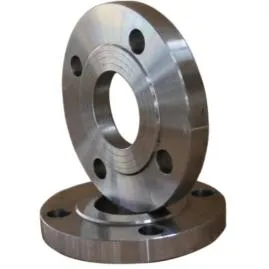-
Cangzhou Yulong Steel Co., Ltd.
-
Phone:
+86 13303177267 -
Email:
admin@ylsteelfittings.com
- English
- Arabic
- Italian
- Spanish
- Portuguese
- German
- kazakh
- Persian
- Greek
- French
- Russian
- Polish
- Thai
- Indonesian
- Vietnamese
- Zulu
- Korean
- Uzbek
- Hindi
- Serbian
- Malay
- Ukrainian
- Gujarati
- Haitian Creole
- hausa
- hawaiian
- Hebrew
- Miao
- Hungarian
- Icelandic
- igbo
- irish
- Japanese
- Javanese
- Kannada
- Khmer
- Rwandese
- Afrikaans
- Albanian
- Amharic
- Armenian
- Azerbaijani
- Basque
- Belarusian
- Bengali
- Bosnian
- Bulgarian
- Catalan
- Cebuano
- China
- China (Taiwan)
- Corsican
- Croatian
- Czech
- Danish
- Esperanto
- Estonian
- Finnish
- Frisian
- Galician
- Georgian
- Kurdish
- Kyrgyz
- Lao
- Latin
- Latvian
- Lithuanian
- Luxembourgish
- Macedonian
- Malgashi
- Malayalam
- Maltese
- Maori
- Marathi
- Mongolian
- Myanmar
- Nepali
- Norwegian
- Norwegian
- Occitan
- Pashto
- Dutch
- Punjabi
- Romanian
- Samoan
- Scottish Gaelic
- Sesotho
- Shona
- Sindhi
- Sinhala
- Slovak
- Slovenian
- Somali
- Sundanese
- Swahili
- Swedish
- Tagalog
- Tajik
- Tamil
- Tatar
- Telugu
- Turkish
- Turkmen
- Urdu
- Uighur
- Welsh
- Bantu
- Yiddish
- Yoruba

Oct . 02, 2024 04:29 Back to list
Techniques for Bending Metal Pipes Efficiently and Safely in Various Applications
Bending a Metal Pipe Techniques and Considerations
Bending metal pipes is a common practice across various industries, from construction to manufacturing. Whether it’s for plumbing, structural support, or decorative purposes, the ability to bend metal pipes effectively is a crucial skill. The process involves understanding the properties of the metal, the tools required, and the techniques to achieve the desired bend without compromising the integrity of the pipe.
Understanding Metal Properties
Before bending any metal pipe, it is essential to understand the properties of the material being used. Different metals exhibit varying levels of ductility, strength, and resistance to deformation. Common materials for pipes include steel, aluminum, and copper. Steel is known for its high strength and durability, making it a preferred choice for structural applications. Aluminum, while lighter and easier to handle, may not be suitable for all applications due to its lower strength. Copper, on the other hand, is often used in plumbing applications due to its corrosion resistance and ease of manipulation. Knowing the material's properties helps in choosing the right bending method and equipment.
Bending Techniques
There are several techniques for bending metal pipes, each suited for different applications and types of materials
. The most common methods include1. Hot Bending This technique involves heating the metal to a pliable temperature before bending. It is particularly useful for thicker pipes or materials with lower ductility. The heat allows for smoother bends and reduces the risk of cracking.
2. Cold Bending Cold bending involves bending the pipe at room temperature. This technique is often preferred for thinner pipes and materials with high ductility, as it preserves the metal's integrity. However, it requires precise control to avoid kinking or damaging the pipe.
bending a metal pipe

3. Mandrel Bending In this method, a mandrel is inserted into the pipe to support it during the bending process. This helps maintain the shape of the pipe and prevents it from collapsing or crimping at the bend. Mandrel bending is commonly used for high-quality finishes and tight radius bends.
4. Pressure Bending This technique uses hydraulic or mechanical pressure to bend the pipe into the desired shape. It is effective for producing consistent results and is often used in industrial applications.
Tools and Equipment
Using the right tools is crucial for effective pipe bending. Common tools include
- Pipe Benders These are specialized devices designed to bend pipes accurately. Manual and hydraulic benders are available for various pipe sizes and materials. - Heat Sources For hot bending, a torch or furnace is necessary to heat the metal evenly. - Mandrels Used in mandrel bending, these tools support the inside of the pipe during the bend.
Conclusion
Bending a metal pipe requires a combination of skill, knowledge, and the right tools. By understanding the properties of different metals and employing appropriate bending techniques, one can achieve desired results while maintaining the pipe's integrity. Whether for functional or aesthetic purposes, mastering the art of pipe bending opens up a world of possibilities in metalworking and fabrication. Whether you're a seasoned professional or a DIY enthusiast, proper planning and execution will ensure successful projects that stand the test of time.
Latest news
-
ANSI 150P SS304 SO FLANGE
NewsFeb.14,2025
-
ASTM A333GR6 STEEL PIPE
NewsJan.20,2025
-
ANSI B16.5 WELDING NECK FLANGE
NewsJan.15,2026
-
ANSI B16.5 SLIP-ON FLANGE
NewsApr.19,2024
-
SABS 1123 FLANGE
NewsJan.15,2025
-
DIN86044 PLATE FLANGE
NewsApr.19,2024
-
DIN2527 BLIND FLANGE
NewsApr.12,2024
-
JIS B2311 Butt-Welding Fittings LR/SR 45°/90° /180°Seamless/Weld
NewsApr.23,2024











